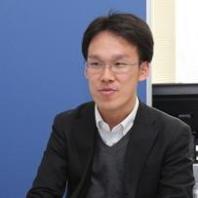![]()
![]()
Research Support Office Research Advancement Division. Tokyo University of Agriculture and Technology
| TEL | +81-42-367-5944 |
|---|---|
| FAX | +81-42-367-5946 |
This program is supported by MEXT’s scientific technology human resource development fee grant, "Program to Disseminate Tenure Tracking System".
Home > Tenured Faculties > Yamanaka Akinori

Yamanaka Akinori

| Affiliation | Institute of Engineering |
|---|---|
| Division | Division of Advanced Mechanical Systems Engineering |
| Research field | Computational solid mechanics, Computational microstructure engineering |
| Keyword(S) | Phase-field method, Homogenization method, Steel |
| Url | http://web.tuat.ac.jp/~yamanaka/ |
| Research experience | ・Apr. 2007-Sep. 2008, Research Fellowship for Young Scientists (DC1), Japan Society for the Promotion of Science |
|---|---|
| Educational background | ・2005 Graduated Department of Mechanical Engineering, Faculty of Engineering, Kobe University |
| Awards | * The latest information is shown at the member's website. |
| Selected papers and publications | * The latest information is shown at the member's website. |
Due to the recent global enviroment problems, developments of high efficiency hybrid cars, electric cars and airplanes are promoting. In order to accelerate such developments, it is very essential to produce light weight, high strength and high toughness materials. However, mechanical properties of material are strongly affected by complex morphology of microstructures in the material. Therefore, it is difficult to clarify formation of the microstructure and also improve the mechanical properties of the material only by experiments.
In this study, to clarify the microstructure evolution and predict the mechanical property on the basis of the morphology of the microstructure, we are trying to develop a systematic numerical material design method by using the phase-field and the homogenization methods. Furthermore, we are also studing a GPGPU computation which is a powerful way to perform an efficient numerical simulation and obtain beneficial finding for a new material development. Though these multidisciplinary research projects concerning about mechanical engineering, material science and computational science, I bring up superior human resources having a good engineering sense.
The most attractive point of the TUAT's tenure-track system is that a young researcher can concentrate own research project supported by abundant research fund. Also, I'm attracted by the TUAT's tenure-track system because I can manage my own independent laboratory. Furthermore, under the TUAT's tenure-track system, a menter (an experienced professor) gives a tenure-tracked researcher very helpful advices for young resercher's research project and management of the laboratory.
In the TUAT's tenure-track system, a lot of research fund and a independent laboratory are given us. Therefore, I feel considerable pressure to achive outstanding research results in five years. However, by withstanding the pressure, I would like to achieve good research achievements and be the world's leading researcher about the phase-field method. Furthermore, I would like to bring up the TUAT's talented students so that they can contribute to not only Japan, but also entire world.